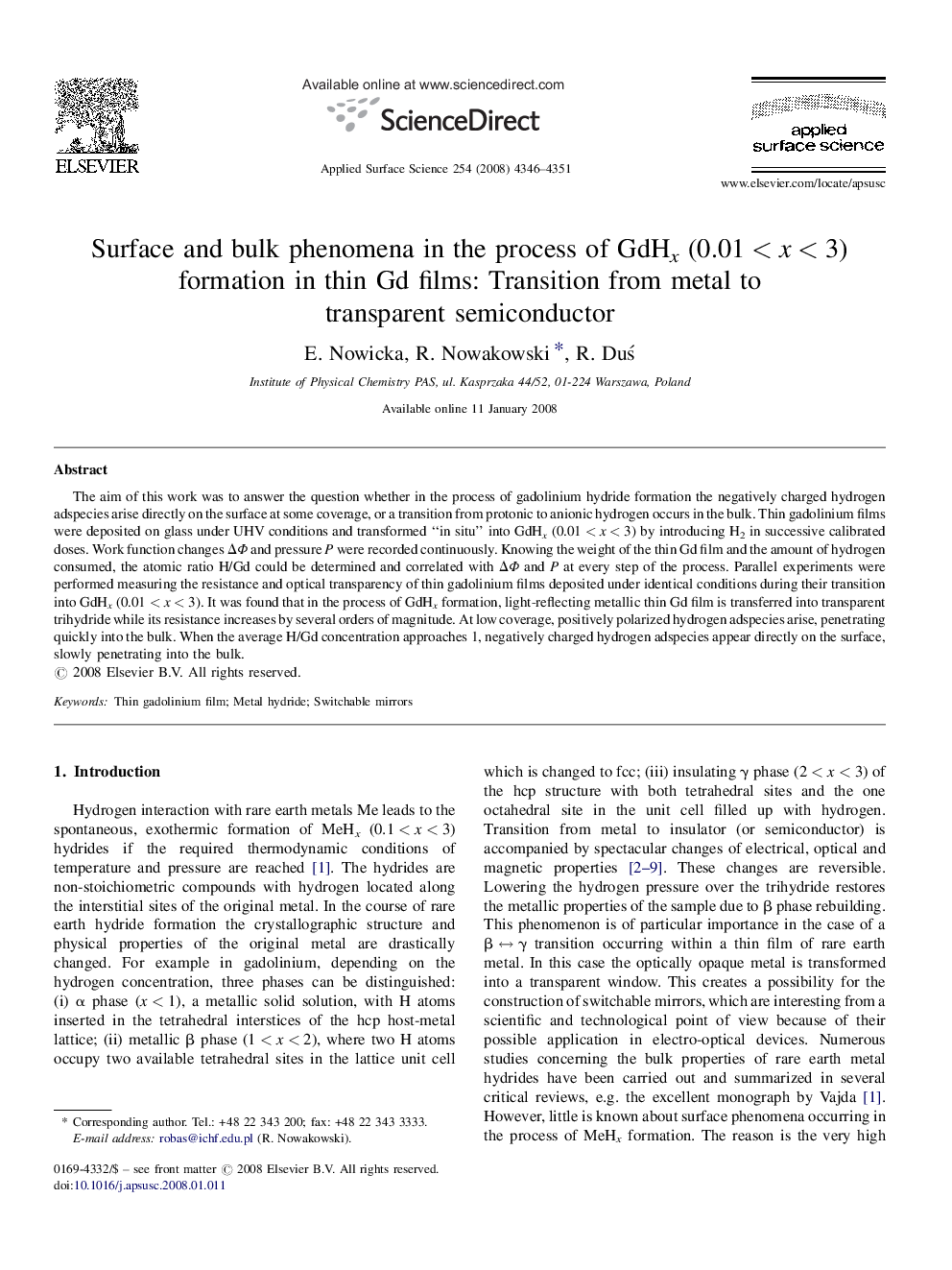| Article ID | Journal | Published Year | Pages | File Type |
|---|---|---|---|---|
| 5364255 | Applied Surface Science | 2008 | 6 Pages |
The aim of this work was to answer the question whether in the process of gadolinium hydride formation the negatively charged hydrogen adspecies arise directly on the surface at some coverage, or a transition from protonic to anionic hydrogen occurs in the bulk. Thin gadolinium films were deposited on glass under UHV conditions and transformed “in situ” into GdHx (0.01 < x < 3) by introducing H2 in successive calibrated doses. Work function changes ÎΦ and pressure P were recorded continuously. Knowing the weight of the thin Gd film and the amount of hydrogen consumed, the atomic ratio H/Gd could be determined and correlated with ÎΦ and P at every step of the process. Parallel experiments were performed measuring the resistance and optical transparency of thin gadolinium films deposited under identical conditions during their transition into GdHx (0.01 < x < 3). It was found that in the process of GdHx formation, light-reflecting metallic thin Gd film is transferred into transparent trihydride while its resistance increases by several orders of magnitude. At low coverage, positively polarized hydrogen adspecies arise, penetrating quickly into the bulk. When the average H/Gd concentration approaches 1, negatively charged hydrogen adspecies appear directly on the surface, slowly penetrating into the bulk.
